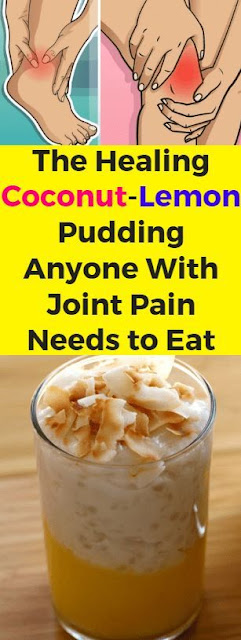The Healing Coconut Lemon Pudding Anyone & Joint Pain Needs To Eat!!!
Today we're going to show you how to prepare a tasty dessert that will satisfy your cravings and reduce your joint pain. The dessert can also be consumed as a snack or as a breakfast alternative. The keto recipe is low on carbs, but rich in essential nutrients which will improve your digestion, reduce joint pain, and promote the health of your skin, nails, and hair.
The main ingredients in the dessert are coconut milk and lemon juice, both beneficial ingredients which can significantly improve the health and quality of your skin. Furthermore, the dessert will also promote weight loss, as the coconut milk contains medium-chain triglycerides which the body uses to burn extra fat.
On the other hand, lemon juice offers a variety of health benefits. It can alkalize your body, lower the levels of citrate in the urine and prevent kidney stones and due to the high content of fiber, it can also help you lose weight.
Here's How To Prepare The Dessert
Ingredients
- ½ a cup lemon juice
- ¼ teaspoon vanilla extract
- 2 cups coconut milk
- 3 tablespoons organic gelatin powder
- Stevia leaves (or maple honey)
Preparation Method
- Pour the water in a pan and add the gelatin next, then leave it aside for a couple of minutes until it softens.
- Next, mix the lemon juice, coconut milk, and vanilla extract in a glass jar.
- Now, cook the gelatin mixture until it dissolves, then add the stevia extract or maple syrup and whisk in the coconut milk-lemon juice mixture.
- Pour the delicious pudding into cups and enjoy.
- As we mentioned, you can eat the dessert instead of breakfast or save it for a midday snack.
- It will boost your digestion and metabolism better than anything else and improve your body's fat-burning ability, eventually leading to weight loss.




Comments
Post a Comment